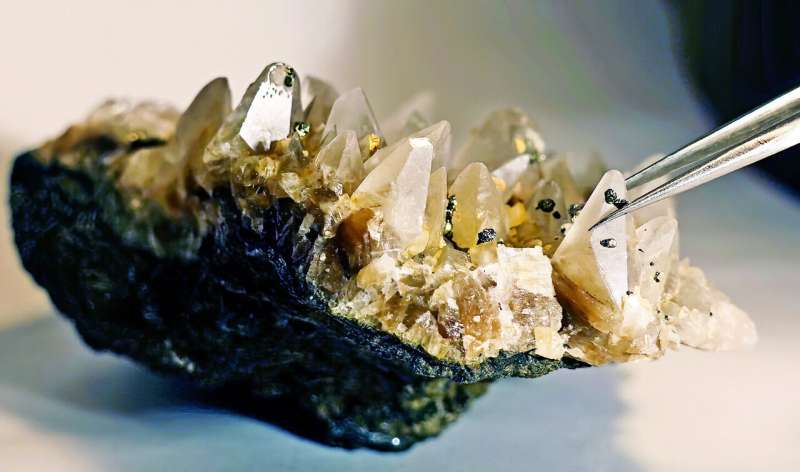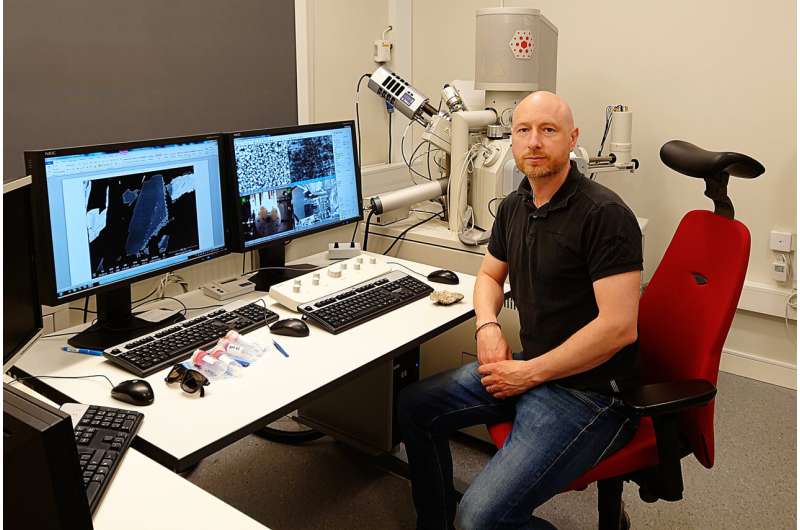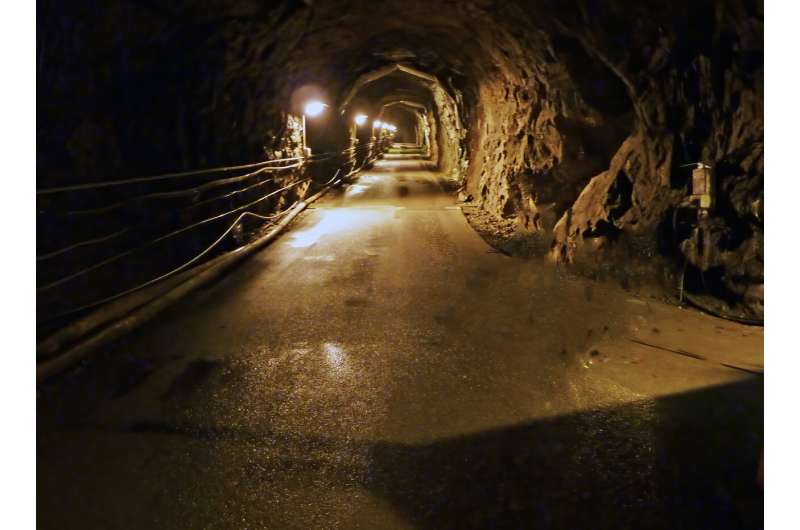Deep bedrock mineral veins are microbial graveyards

Research in recent years has revealed that microorganisms inhabit fractured rocks of the continental and oceanic crust to depths of several kilometers, and that they have done so for millions of years. In a new study published in Communications Earth & Environment, an international team of researchers have collected mineral veins from more than 30 deep mines in the Swedish Precambrian basement to search for ancient life, and the signs are indeed plentiful and intriguing.
Igneous rocks make up a majority of Earth's continents. Their deep, dark and anoxic fracture systems are home to microorganisms that gain energy from consumption of gases, nutrients in fluids and sparsely available organic carbon. Recent research in this realm has started to shed light on how life copes at depth, but studies investigating ancient signatures of life have been relatively scarce so far. Knowledge of the extent of deep life in time and space is therefore limited, particularly from an evolutionary perspective.
This deep biosphere is probably the largest microbial ecosystem on Earth, but signs of ancient life in this realm has so far been limited to a few sites.
In a new comprehensive study, researchers have analyzed mineral vein samples from a large number of deep mines in Sweden and Norway, to hunt down signatures of ancient life in the fracture systems, and to gain knowledge of when the igneous crust was colonized and by whom.
Henrik Drake, associate professor at the Linnæus University, and lead author of the study, says, "We examined mineral samples from more than 30 mines and found solid proof for microbial activity in the majority of them. We looked for, and detected, three types of biosignatures: isotopic, molecular and morphological, from the three domains of life, namely archaea, bacteria and eukarya."

The search was fruitful and shows that fossil signs of ancient life are omnipresent in the igneous fracture systems. "Fossils are usually thought of as exclusive features of sedimentary rocks, but here we show that igneous rocks can have a rich fossil archive, at least for microorganisms of prokaryotic and even eukaryotic origin," says Magnus Ivarsson, of the Swedish Museum of Natural History and co-author of the study.
A mine of particular interest was the Kallmora Silvermine in the Berglsagen mining area, Sweden. This mine has been abandoned and water-filled for more than 100 years, and the researchers had to consult museum mineral collections to obtain samples from the deep. This mine contained some of the most compelling evidence of ancient life yet recorded, and revealed that both methane producing and sulfate reducing microorganisms had occupied the fracture system in the past.
"Aided by micro-analyses of stable isotopes of carbon and sulfur in the minerals, we could attest that the methane producers were succeeded by the sulfate reducers" says Henrik Drake.
"Coupled with micro-analytical uranium-lead geochronology of vein filling carbonate minerals, we could reveal that the methane producers were active about 50–30 million years ago, and the sulfate reducers 19–13 million years ago" says Nick Roberts, of the British Geological Survey, and co-author of the article.
"Another exceptional finding of the Kallmora mine was that sulfate reducers could be distinguished also by remains of specific bacterial fatty acids preserved within the mineral veins," adds Manuel Reinhardt, Linnæus University, and co-author of the study.
Furthermore, the sulfate reducers that lived in this mine left behind sulfur isotope signatures in a mineral called pyrite, and those are the most extreme biosignatures yet found in the mineral record of our planet. A world record of sulfur isotopes if you will.

Henrik Drake says, "Our study shows that signatures of ancient life are omnipresent in the igneous crust of the Fennoscandian shield. It is reasonable to believe that the same signatures occur at depth across other continents. Our multi-disciplinary approach is the perfect tool to find it out, and why not also on other planets? Mineral veins are just the perfect graveyards for microorganisms, and represent an untapped archive for signs of ancient life."
More information: "Biosignatures of ancient microbial life are present across the igneous crust of the Fennoscandian shield" Communications Earth & Environment, DOI: 10.1038/s43247-021-00170-2
Journal information: Communications Earth & Environment
Provided by Linnaeus University



















